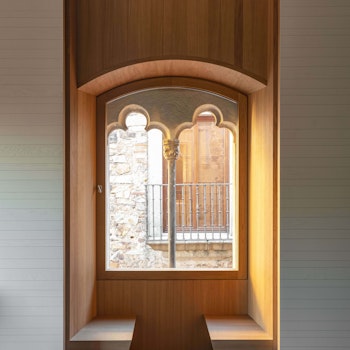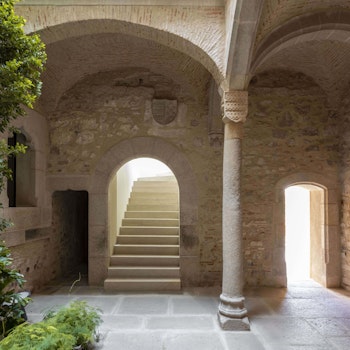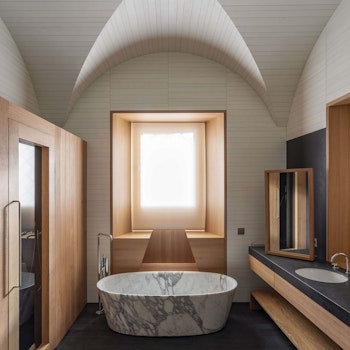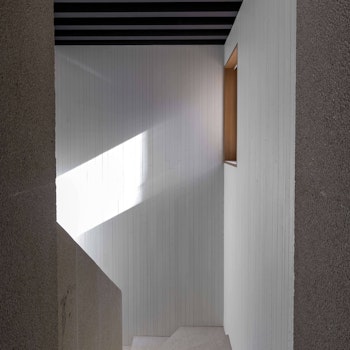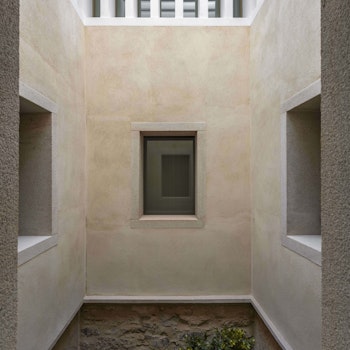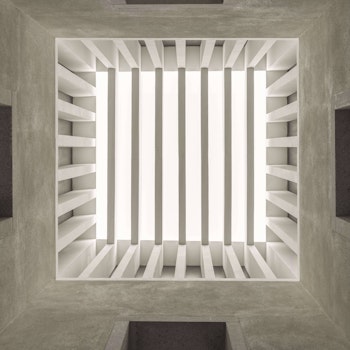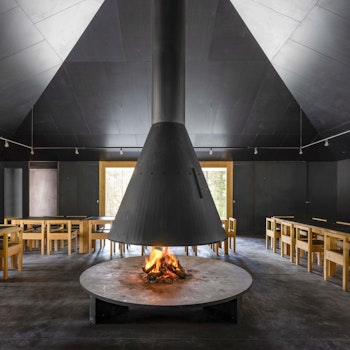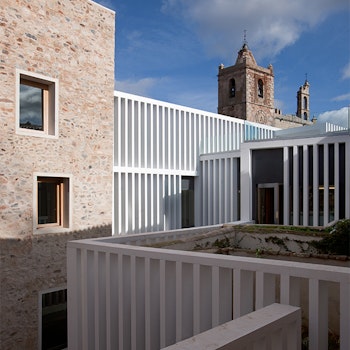ARCHITECT
TUÑÓN Y ALBORNOZ ARQUITECTOS
The restoration of the Paredes Saavedra Palace House in Cáceres tries to think about the city from the assumptions that made it possible, imagining how it can be carried out in our time. "Building on the existing" is one of the fundamental themes of contemporary architecture and urbanism, as disciplines capable of responding and satisfying the needs of the human being.
The original Paredes-Saavedra Palace House is a domestic-sized urban fortress, which was built between the 15th and 16th centuries, within the walled enclosure of the city of Cáceres.
The current palace house, organized on three floors around a small asymmetric interior atrium and with a patio at the back, is the result of a concatenation of spaces built at different times, which make up an asymmetric structure of structural load-bearing walls, whose topped tower, in times of the Catholic Monarchs, is considered a significant element of the civil architecture in Cáceres.
The restoration of this palace house was carried out to accommodate eleven rooms, which complement the fourteen rooms already existing in the Hotel Atrio Relais Chateaux. The new rooms, adapt in a diversified way to the existing spaces in the palace house, trying to get the most out of the specific spaces, and their specific conditions.
The intervention is based on respect for the structure of the existing building, with the incorporation of a contemporary wooden architecture that covers, as an interior garment, the surfaces by means of panels and vaults made out of wooden clapboards on the ground floor, and panels and coffered ceilings, also made of wood, on the two upper floors.
In addition to the eleven rooms, the restoration clearly defines a succession of public spaces organized according to a diagonal sequence that goes from Calle Ancha to Calle San Pedro. This route that begins with the vaulted hall, in which a (site-specific) work by the Portuguese artist José Pedro Croft has been included, passes through the asymmetrical atrium with a succession of brick vaults that rest on two medieval Doric columns, to end in the landscaped backyard, where a small pool is located.
The intervention is complemented by the raising of the topped tower with the aim of improving the profile of the palace house, making its original structure more legible, from the city and especially from Calle Ancha.
The restoration carried out on the palace house tries to serve as an exemplary intervention on how to act in a historical building from conceptual assumptions typical of the architecture of the present, influencing substantial issues such as the preservation of historical centre’s urban environments, as well as the stimulating capacity that an intervention on a domestic and complex space of this sort can have on people’s lives.
In this way, the transformation from a palace house to a hotel transmutes the private domesticity, typical of a single-family home, to a public domesticity that is linked to the personal experience of travel and the collective experience of tourism.
source: Tuñón y Albornoz Arquitectos
YOU MAY ALSO LIKE


